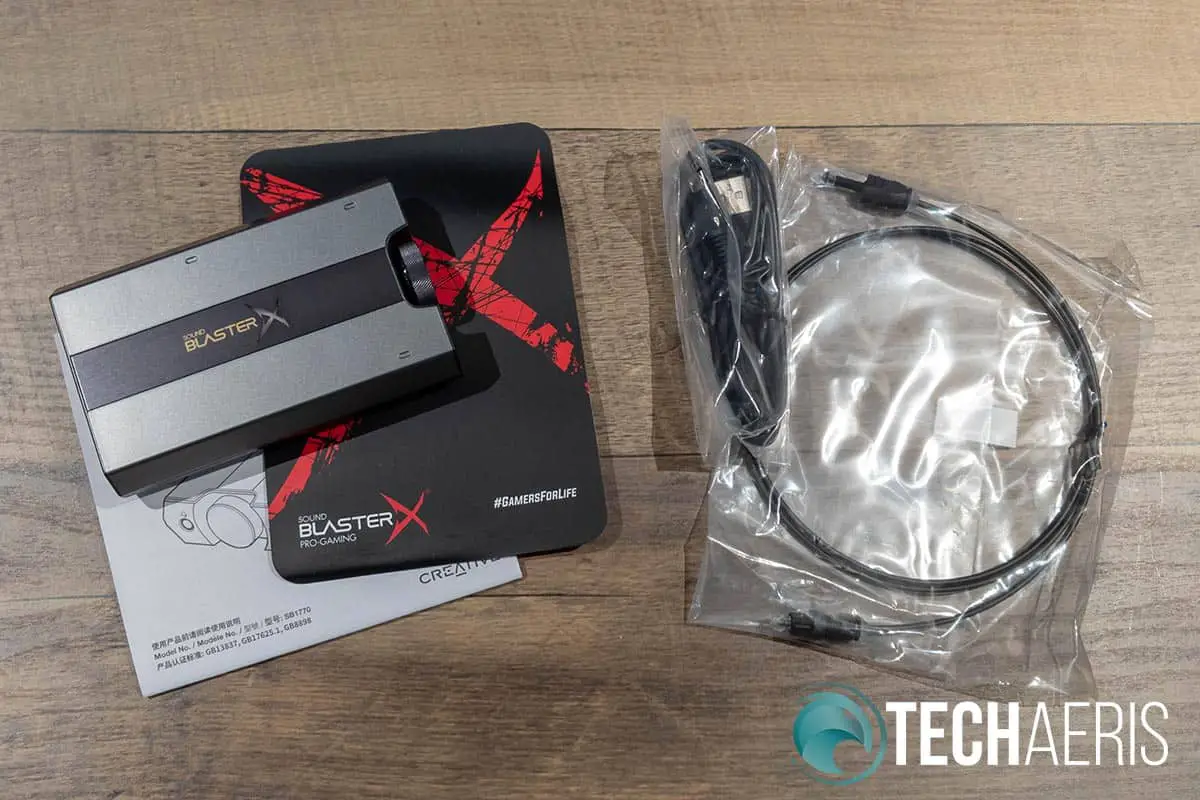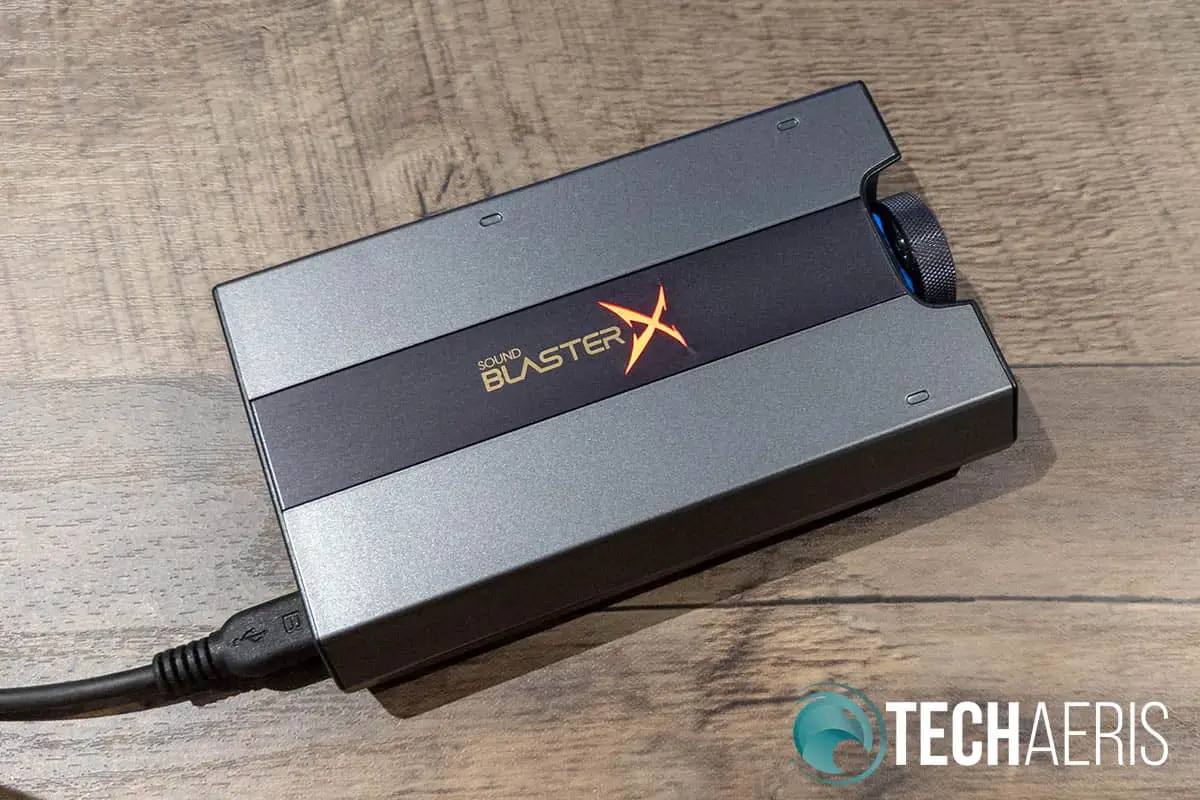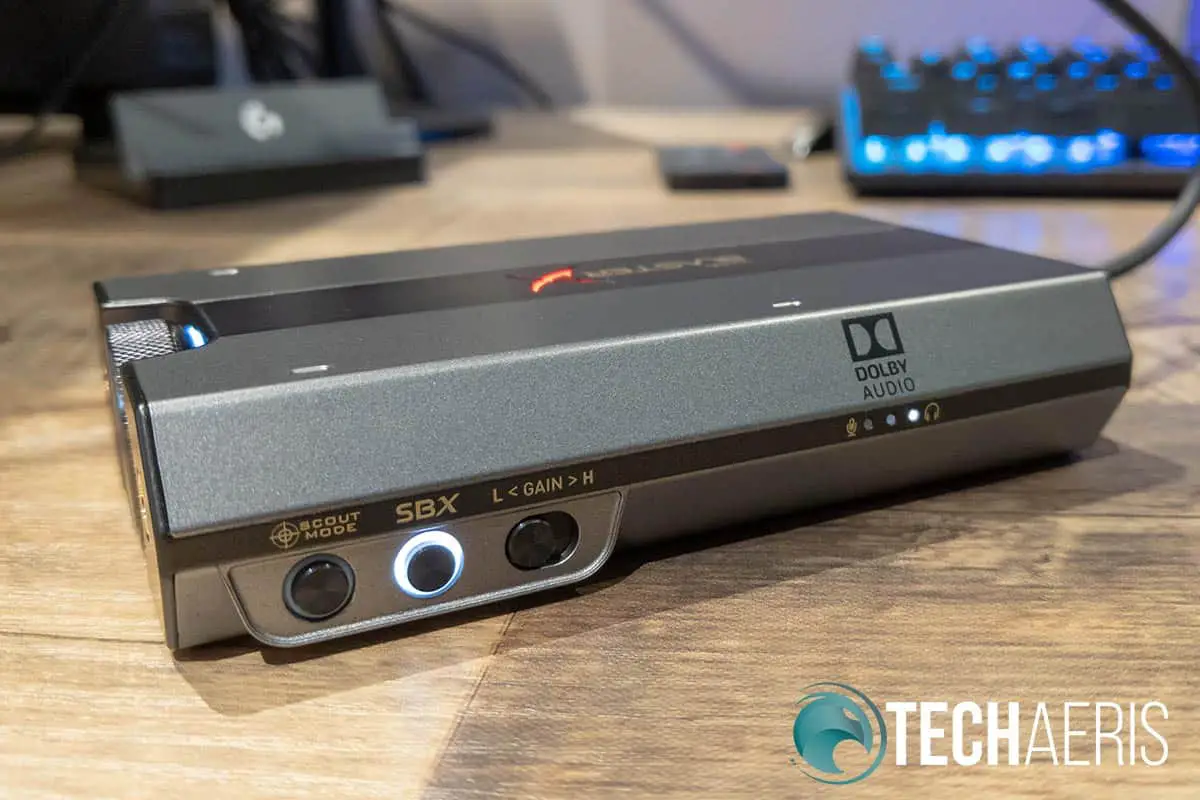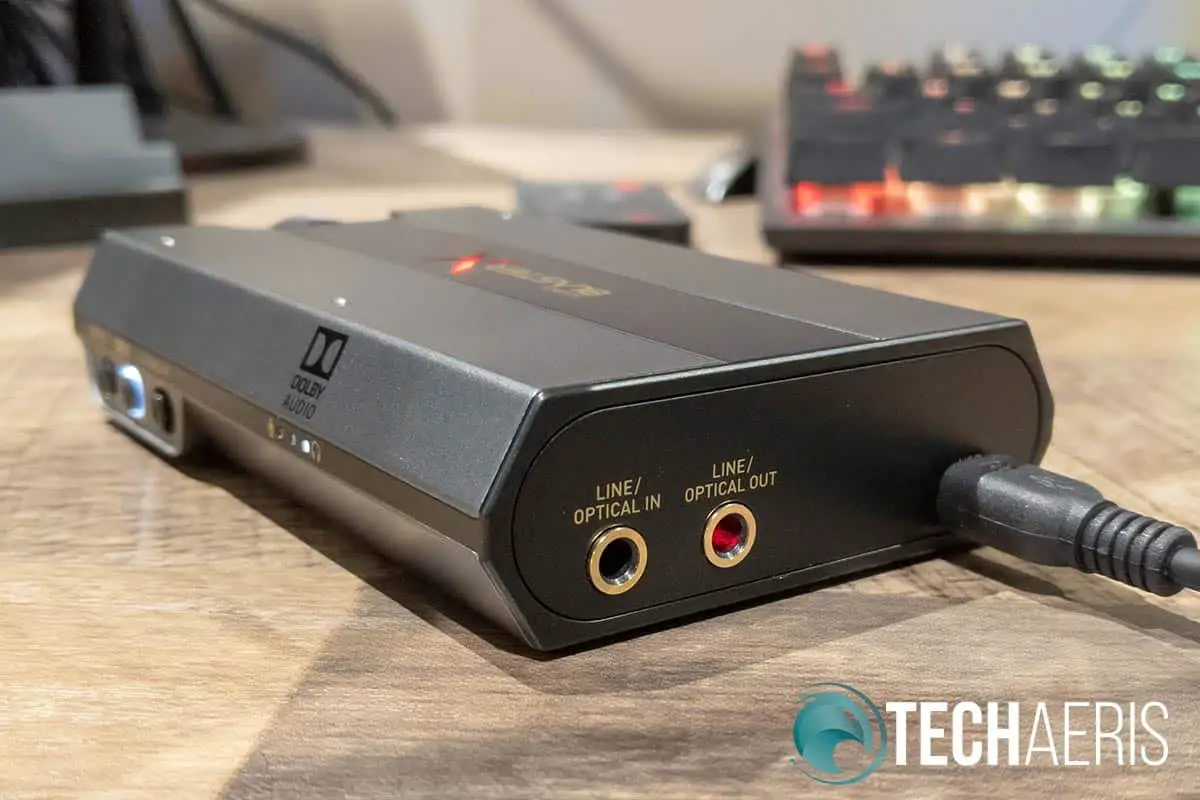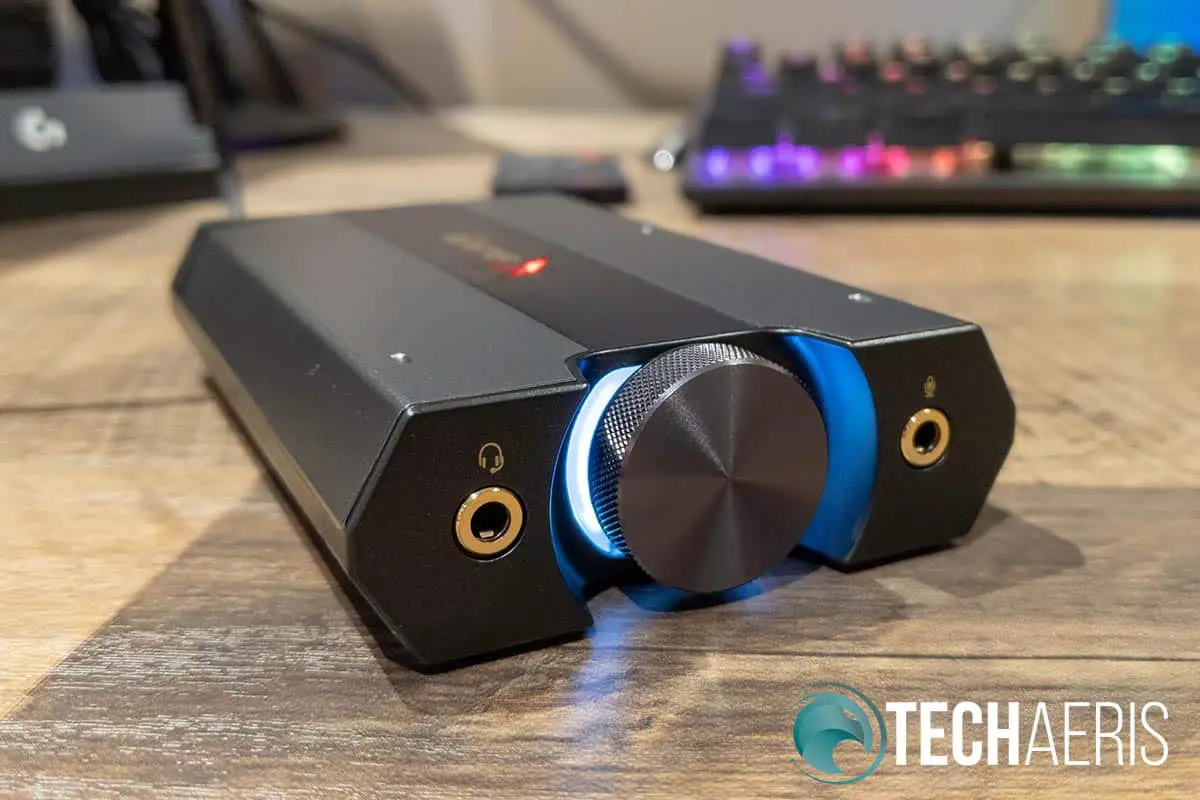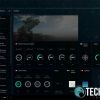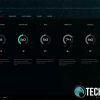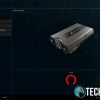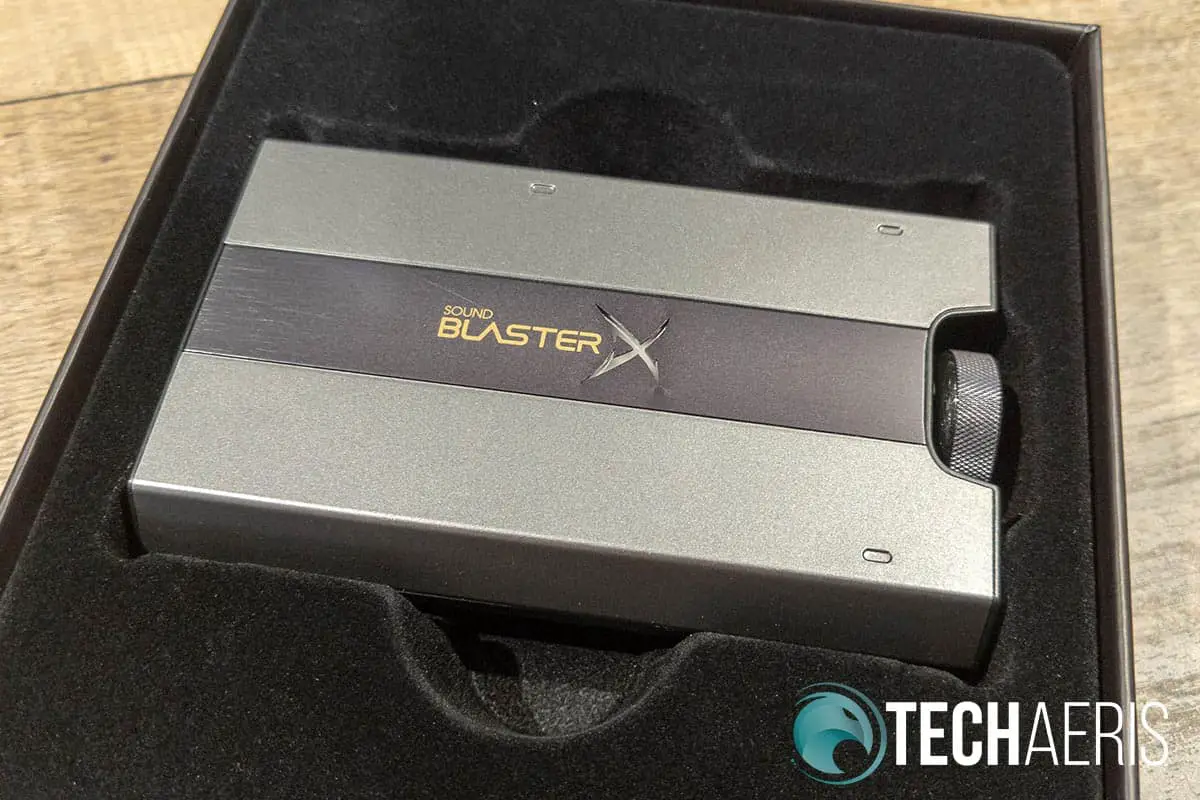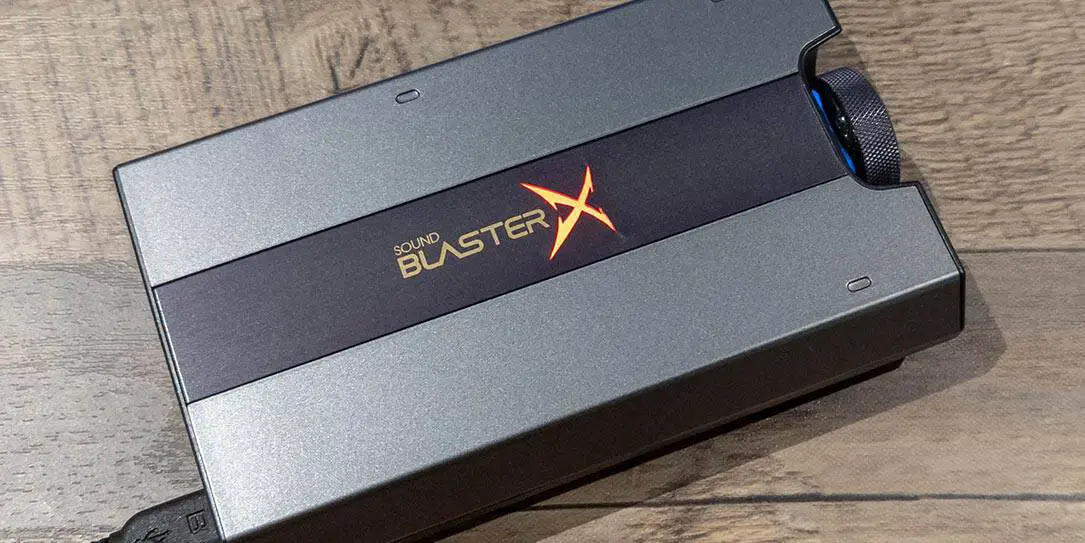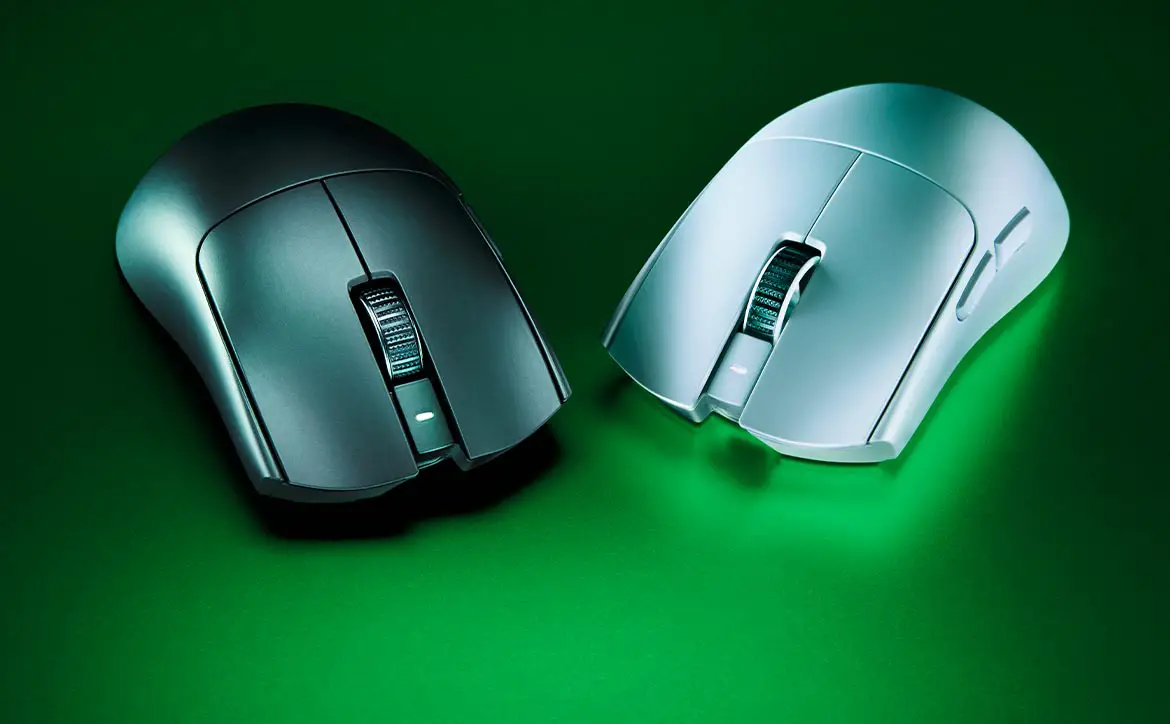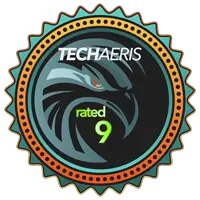
When gaming, decent audio is a must. Not only does it provide a fuller immersion into the gaming experience, but it can also mean the difference between life and death in online multiplayer games. A few years ago, we reviewed the Sound BlasterX G5 7.1 HD Audio Portable Sound Card and now it’s time to review its successor. Our Sound BlasterX G6 review takes a look at a hi-res gaming DAC and USB sound card which will amp up your gaming audio.
Specifications
The Sound BlasterX G6 Hi-Res Gaming DAC and USB Sound Card with Headphone Bi-Amp has the following features and specifications:
- Works with: PC, PlayStation 4, Xbox One, Nintendo Switch
- Audio Quality: 130dB DNR
- Amp: Low output impedance 1Ω, up to 600Ω headphones
- DAC: 32-bit/384kHz
- Interface/Power: USB 2.0, USB Bus Powered
- Audio Technology: SB-Axx1™, Xamp, Dolby Digital Decoding, Scout Mode
- Connectivity Options (Main): 1 x ⅛″ Line In/mini TOSLINK In Combo Jack, 1 x ⅛″ Line Out/mini TOSLINK Out Combo Jack, 1 x ⅛″ Headphone/Headset Jack, 1 x ⅛″ Ext. Mic In Jack, 1 x Micro-USB port for PC/Mac
- DAC
- Dynamic Range: 130dB (A-weighted)
- THD+N: ~0.0002%
- Sampling Rate (DSP Playback): PCM 16/24/32-bit / 44.1, 48.0, 88.2, 96.0kHz
- Sampling Rate (Direct Mode Playback): PCM 16/24/32-bit / 44.1, 48.0, 88.2, 96.0, 176.4, 192.0, 352.8, 384.0 kHz, DoP 24-bit / 176.4 , 352.4 kHz
- ADC
- Dynamic Range: 114dB (A-weighted)
- THD+N: 0.0006%
- Sampling Rate (Mic-in): 16/24/32-bit / 44.1, 48.0, 88.2, 96.0, 176.4, 192.0 kHz
- Sampling Rate (Line-in, Optical-In): 16/24/32-bit / 44.1, 48.0, 88.2, 96.0, 176.4, 192.0 kHz
- Output Impedance: 1 Ω
- Supported Headphone Impedance: 16 – 600 Ω
- High Gain: 150 – 600 Ω (+14dB)
- Low Gain: 16 – 149 Ω (+0dB)
- ASIO: Playback and Recording
- Supported Operating Systems: Windows® 7, Windows® 8, Windows Vista®, Windows® 8.1, Windows® 10, Mac OS X v10.8 and above
- Dimensions: 111 x 70 x 24 mm (4.37 x 2.75 x 0.94″)
- Weight: 144 g (5 oz)
System Requirements
- Windows® OS
- Intel® Core™i3 or AMD® equivalent processor
- Intel, AMD or 100% compatible motherboard
- Microsoft® Windows 10 32/64 bit, Windows 8.1/8.0 32/64 bit, Windows 7 32/64 bit
- 1GB RAM
- >600 MB of free hard disk space
- USB 2.0 / USB 3.0 port
- Mac® OS
- Mac OS X® 10.9 or higher
- 1GB RAM
- USB 2.0 / USB 3.0 port
- PS4
- Firmware Version 5.0 or later
- Available USB port
- Available Optical Out port (for Dolby Digital decoding)
- Xbox One
- Xbox OS Version 10.0 or later
- Available Optical Out port (for Dolby Digital decoding)
- External USB Power (not included)
- Voice communications not supported
- Nintendo Switch
- Switch OS 5.0 or later
- Available 3.5mm headphone port
- Available USB port (in docking mode)
- External USB Power (not included)
- Voice communications not supported
What’s in the box
- Sound BlasterX G6
- Optical Cable
- Micro-USB Cable
- Quick Start Leaflet
- Warranty Leaflets
Design
As far as design goes, the Sound BlasterX G6 is pretty similar to the G5. The device itself is 4.37-inches long, 2.75-inches wide, and 0.94-inches tall. Finished in gunmetal gray, the center piece running lengthwise across the top features the Sound BlasterX logo. The Sound Blaster portion is in gold, while the X is an LED. When turned off, it’s white, when plugged in, the X turns red (the colour is customizable), completing the Sound BlasterX look.
The front and back of the G6 are black. The front has a volume knob in the middle which is backlit by a white LED ring. On either side of the knob are two 3.5mm audio ports — one for your headset and the other for your microphone.
The back, on the other hand, is where you’ll find your optical and Micro-USB inputs. From left to right, when looking at it, you have a line/optical in port, a line/optical out port, and on the far right your Micro-USB power port.
Both the left and right side are angled out from the top and bottom, meeting in a thin black strip in the middle. While there isn’t anything on the left side (when looking from the volume knob), there are two buttons, a switch, and some LEDs on the right side. The two buttons are near the front and are used to toggle Scout Mode and SBX. The switch to the right of these toggles your gain between low and high. Further towards the back, the Dolby Audio logo is printed above three LEDs. A microphone symbol is to the left and a headset to the right.
On the bottom of the G6 is a rubberized base/pad which keeps the DAC in place when sitting on a desk or table beside your system or laptop.
Its definitely on the portable sized side of things and is light enough to easily add to your on-the-go gaming bag. Depending on where you’re gaming and what you’re connecting it to, you may need to bring an external 5V/1A USB power supply as well to power the G6.
Installation/Setup
The Sound BlasterX G6 has varying ways of setup depending on whether you’re using it with your console or PC.
When connecting to a PlayStation 4 console, you can use the USB in and/or the optical line. For the Xbox One, you’ll need to connect via the optical cable and plug into an external USB power source. The Nintendo Switch and PC allow you to connect directly via USB for both power and audio.
In any case, setup is pretty easy and straightforward.
Ease of Use
Once you’ve connected the Sound BlasterX G6, you’re good to go. On PC, you’ll want to install the software as discussed in the next section. Either way, software or not, you can control various features straight from the G6 itself.
Pressing the Scout Mode button turns Scout Mode on or off. In this mode, audio cues are enhanced allowing gamers to better hear footsteps, weapon reloading, or other audio cues which help pinpoint the locations of crates or other objects. Long pressing this button for 2 or more seconds toggles Direct Mode which enables playback up to 32-bit/384kHz. When Direct Mode is enabled, SBX Effect and Scout Mode are unavailable.
Pressing the SBX button toggles the currently selected software profile on or off when used on the PC. The gain switch helps further customize the G6 for your specific headphones. Select L for low impedance headphones (16 – 149 Ω) and H for high impedance headphones (150 – 600 Ω).
As for the front volume control knob/switch, when the LED ring is solid white, you are controlling playback volume. When it’s solid red, you are adjusting the sidetone mic control. Pressing and holding the knob in for about two seconds will toggle the control. Turning the dial will adjust the volume while pressing the knob in will mute or unmute the mic or game volume.
Software
The first thing you’ll want to do is check to see if you need the updated firmware. The easiest way to do this is to head over to the Sound Blaster X website and download the latest firmware for the Sound Blaster X G6. Double click on the .exe file on a PC or laptop while the G6 is connected via USB and if required, it will update the firmware.
As far as software is concerned, you’ll want to install the Sound Blaster Connect 2 software if you’re using the Sound BlasterX G6 on a PC. You can also check the status of the firmware using the app and update it through the app but there’s no sense installing it if you’re using the G6 on a console.
At first glance, Sound Blaster Connect 2 is pretty convoluted looking with lots of options. While you get a good glance of what’s available option wise from the Dashboard, you can dive in to individual sound and lighting screens for a less cluttered interface.
The Dashboard gives an overview of the current profile, lets you set another profile, customize profile settings, and store profiles on to the G6. The Sound menu allows you to adjust your Surround, Crystalizer, Bass, Smart Volume, and Dialog+ settings. The Voice menu allows you to adjust microphone volume and settings. Finally, the Lighting section allows you to set the various lighting options on the G6.
Sound Quality
The Sound BlasterX G6 has a few notable improvements over the G5. For starters, the audio quality gets a slight boost to 130dB DNR from 120dB. More importantly, however, the G6 also features Xamp, Dolby Digital Decoding, and 32-bit/382kHz on the DAC side of things. The G5, by comparison, does not have Xamp or Dolby Digital Decoding and only has a 24-bit/192kHz DAC. On that note, the G6 definitely sounds like a pretty big upgrade over the G5 on paper
So just what is Xamp? Creative probably describes it best:
The jewel in the Sound BlasterX G6’s proverbial crown is our custom-designed Xamp discrete headphone amplifier. As opposed to single amplification found in other gaming DAC amps, Xamp amplifies both audio channels individually. You’ll enjoy more detailed audio on highs, mids, and bass.
Xamp will drive any gaming headset excellently, but it goes even further than that. The ultra-low 1Ω output impedance perfectly drives performance-grade sensitive 16Ω in-ear monitors all the way to studio-grade 600Ω headphones.
Creative Sound BlasterX website
Sound quality will vary by system, however, in each case, you should see some enhancements to your game audio. The best experience will be enjoyed while on your PC with 32-bit/384Hz PCM and DSD over PCM high-resolution playback via USB.
On the PlayStation 4, either connection mode will gain you quality gaming sound and Scout Mode. Connecting via USB will enable crystal clear voice and audio clarity while Dolby Digital Decoding only works via the optical in port while using the included optical cable.
The Xbox One will deliver enhanced audio with Dolby Digital when connected via the optical cable. The Switch, on the other hand, forgoes the Dolby Digital audio but you will still experience better audio cues and Scout Mode via USB. One important caveat for the Xbox One and Nintendo Switch: voice communications are not supported so you’ll be strictly using this for single player gaming.
All that out of the way, we tested the G6 on a PC desktop, a laptop, the Xbox One, and the Nintendo Switch. During testing, we also used the Sound BlasterX H6 (review coming soon), the Razer Electra V2, and the HyperX CloudX Pro gaming headsets.
In every case, there was definitely a noticeable improvement in audio quality. Whether it was Fortnite on the Switch or the Xbox One, Forza Horizon 4 on the PC or Xbox One, or Heroes of the Storm on the laptop, the audio enhancements were definitely there when we swapped each headset between directly plugging into the system or plugging in via the G6. Scout mode was a big winner, allowing you to more accurately pinpoint specific locations.
The Dolby Digital enhancements on the Xbox One were decent as well. On that note, I didn’t notice too much of a difference on the Xbox One between using Windows Sonic or the G6. As mentioned above, the G6 really shines on a PC or laptop with the Sound Blaster Connect software app.
Price/Value
With an MSRP of US$149.99, the Sound BlasterX G6 isn’t exactly cheap. That being said, neither were sound cards back in the day. Due to gaming becoming more portable, sound card enhancements haven’t always followed through to gaming laptops, and in some cases even gaming PCs.
However, if you do game a lot, especially on PC, and have a weathered and favourite headset you just can’t get rid of, the G6 will enhance the audio and your gaming experience. The versatility between systems as well as the portability of the G6 also adds some more value as well.
That being said, there are plenty of headsets which include Dolby Digital or virtual surround sound. Depending on your hearing, while you should hear a difference with the G6, for some people just a decent set of headphones will be good enough for their gaming experiences.
Wrap-up
The Sound BlasterX G6 isn’t for everyone, however, it should improve your gaming audio experience, regardless of headset or gaming platform. That improvement will vary from person to person depending on hearing and you’d have to be a really dedicated gamer to shell out the extra cash in order to further enhance your audio.
*We were sent a sample of the Sound BlasterX G6 Hi-Res Gaming DAC and USB Sound Card with Headphone Bi-Amp for the purposes of this review.
Last Updated on February 3, 2021.

